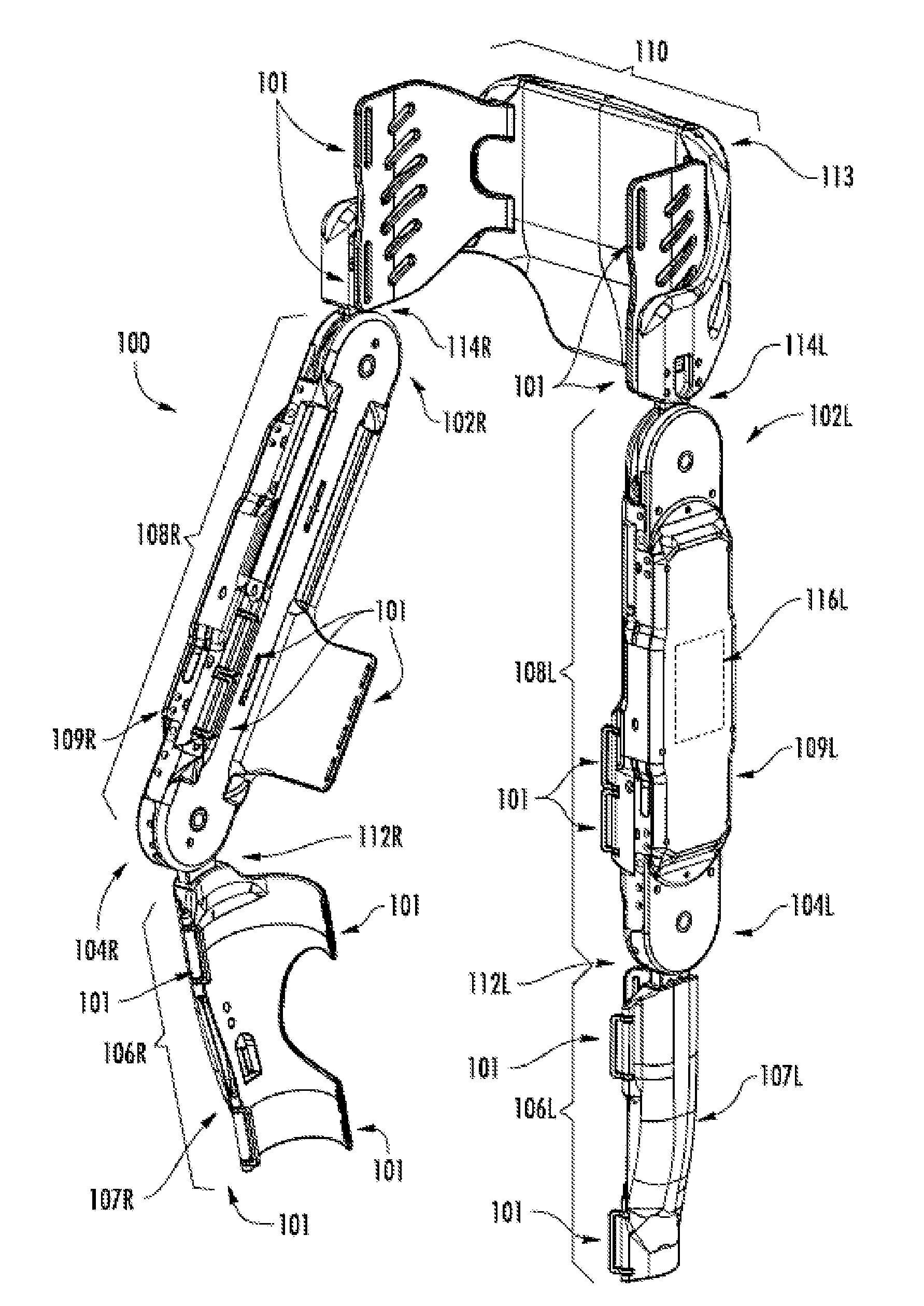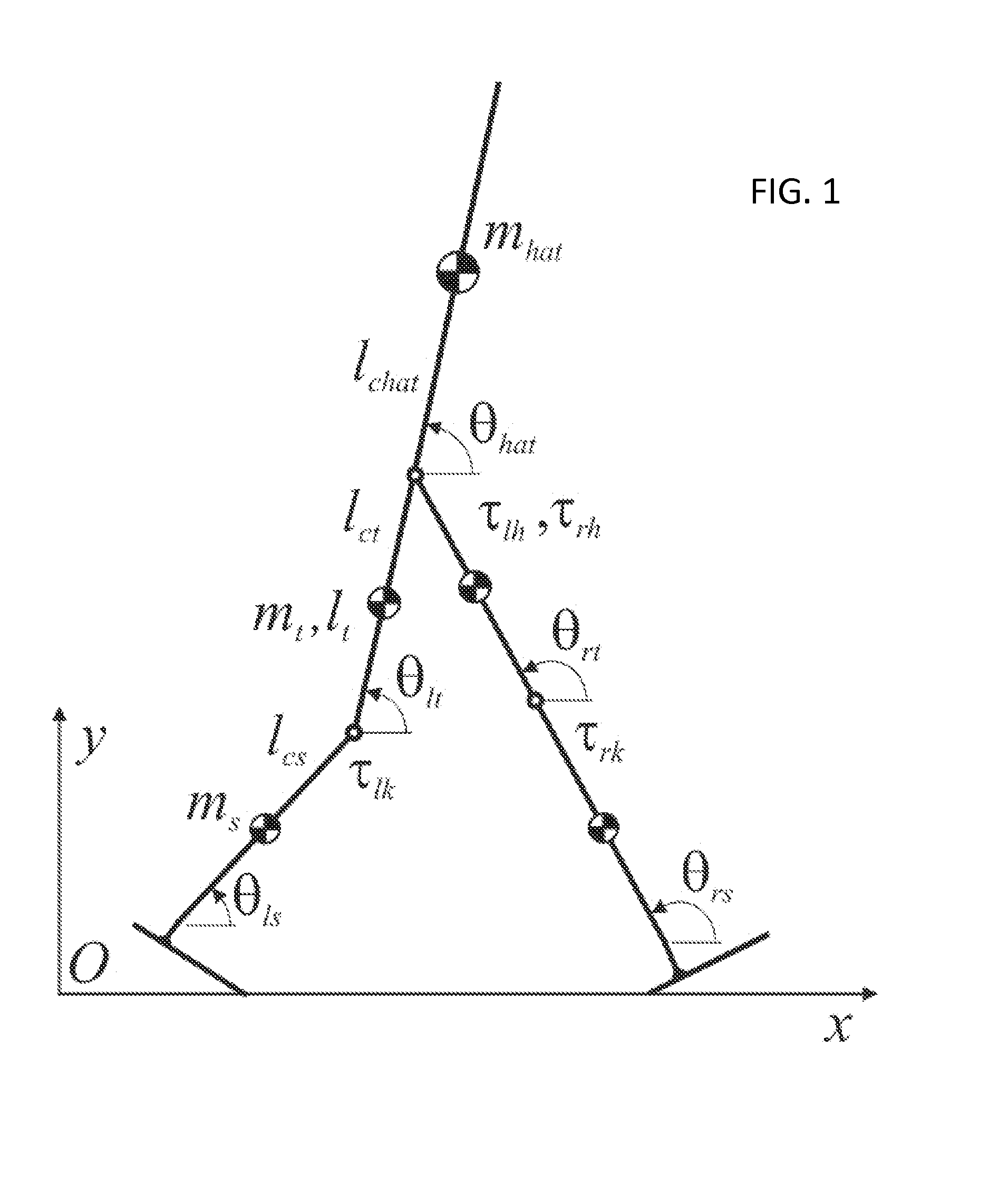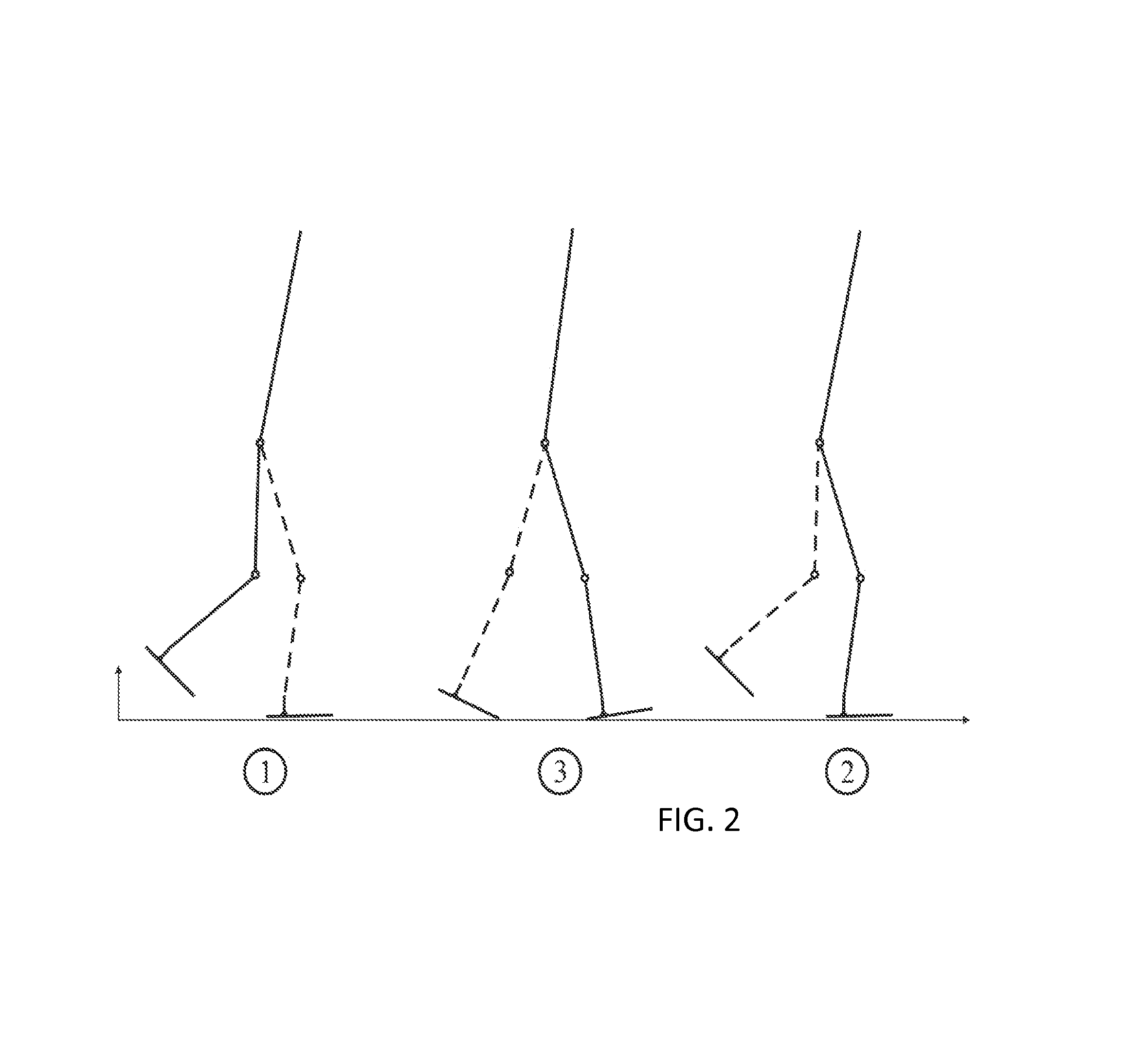Movement assistance device
a technology of moving assistance and assistive devices, which is applied in the direction of prosthesis, program control, instruments, etc., can solve the problems of increasing the incidence of falls and resulting fractures, affecting the movement, and affecting the movement, so as to remove the energetic burden of movement
- Summary
- Abstract
- Description
- Claims
- Application Information
AI Technical Summary
Benefits of technology
Problems solved by technology
Method used
Image
Examples
examples
[0097]The examples shown here are not intended to limit the various embodiments. Rather they are presented solely for illustrative purposes.
[0098]In order to provide a preliminary validation of the control methodology described above, the control approach was implemented on the exoskeleton described above and evaluated on a person in sub-acute stages of stroke recovery. For this preliminary study, assistance was provided for the impaired leg in the swing phase of walking, in an effort to achieve symmetrical stride length. The subject was a 32 year-old female, three months post ischemic stroke, with a right-sided (upper and lower extremity) hemiparesis, able to walk with the aid of a quad cane. An illustration of this individual using the exoskeleton described above operating using the control methodology discussed above is shown in FIG. 7. At the time of testing, the subject was characterized by a FIM gait score of 5 (i.e., supervision required with standby assistance). Note that th...
PUM
 Login to View More
Login to View More Abstract
Description
Claims
Application Information
 Login to View More
Login to View More - R&D
- Intellectual Property
- Life Sciences
- Materials
- Tech Scout
- Unparalleled Data Quality
- Higher Quality Content
- 60% Fewer Hallucinations
Browse by: Latest US Patents, China's latest patents, Technical Efficacy Thesaurus, Application Domain, Technology Topic, Popular Technical Reports.
© 2025 PatSnap. All rights reserved.Legal|Privacy policy|Modern Slavery Act Transparency Statement|Sitemap|About US| Contact US: help@patsnap.com



